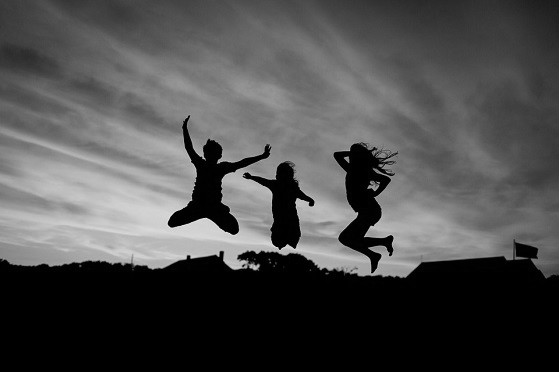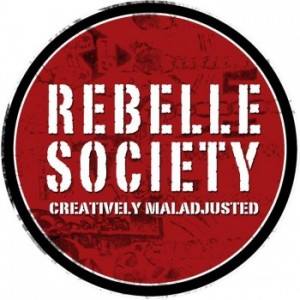The Dancing Medicine.

{source}
I once had the privilege of bearing witness to the divine child in action every week when I was a part-time dance teacher at a local elementary school.
It’s there that I led kids into a big, open space where they were allowed to coil their bodies around rhythm, and explore the limitless menagerie of movement creatures that stalked their wild, wide imaginations. The inhibition that stoked their wonder was something I revered. It allowed them to be risk-taking. It allowed them to discover essential truths and ancient myths through the vehicle of their bodies.
We enjoyed a game, my students and I, that we came to refer to as the Tell Me A Story game. It was simple in concept and profound in practice. I asked them to tell me a story about something specific, using movement and no sound. Straightforward examples I used to begin were things like, “Tell me the story of planting a garden. Tell me the story of why the sun sets. Tell me the story of your favorite pet.”
They threw themselves headfirst into these exercises. They wanted nothing more than opportunities to tell stories kinesthetically. Our kinesthetic synthesis of mind and emotion is, after all, one of our greatest human capabilities.
We soon entered more complex and layered story scenarios. Things like, “Tell me the story of loneliness.”
One child went to the corner of the room, sat down, and tilted his head toward the floor. Another child crawled on his hands and knees toward his friend, and reached out for her. A third child lay down on the ground, and looked up at the ceiling as if the ceiling were a universe of endless stars.
It always quaked me — their willingness to tap into their own human vulnerability and the collective vulnerability of their parents, their siblings, their teachers and the world.
Kids are perceptive as fuck, I’m reminded, time and time again.
We then delved into magical story territory. Things like, “Tell me the story of when rainbow warriors ruled the earth and the moon was made of dolphins.”
It was abstract, yet they were fully able to inhabit abstract places. They were not worried how other students did it. They were curious about the interpretations of their peers, but they didn’t look to their peers to set the template. They trusted their own imagination. They trusted their own creative instinct, limitlessly.
Why, as we grow, do we disconnect from the medicine of our divine, inner child? Why do we block an untamed trust in the wisdom of our non-linear instincts? Why do we stop harvesting the beauty of a flexible mind?
Because society values clear divisions between children and adults. Because we become wounded and afraid. Because we do not want to be rejected.
We ended with, “Tell me the story of how to save the planet.”
I asked this often when I taught. I asked this often because every time they danced the answer, I learned something new that gave me faith.
Here is where I’ll make a confession. There are times when I disavow my sense of wonder and magic, and enter into a dark underworld in which everything appears hopelessly beyond salvation. So, I stored these dancing moments with my students up, and I reached for them when I was drowning in my own cynicism or despair.
Their saving-the-world stories looked like one girl gathering a circle of her friends and linking hands. A boy smoothing his palms over the ground with loving attention. Two children jumping up and down as they faced each other and giggled. A student cradling something invisible and humming softly. Two kids slamming their bodies into the mat against the wall, over and over and over.
There is a deep value in the kind of courageous play my students showed me when they danced the world into salvation. Truths that allude our serious, adult examinations of the planet, they surfaced like sacred shadows on the water.
I believe the power of deep play is its ability to dissolve rigidity and apply the medicine of magical thinking. To access our unruly, creative potential, we must forget everything we know that divides our world into Yes and No, good and bad, this or that. We must be uninhibited in the exploration of our imagination. We must be ceaselessly dedicated to the delight of the task at hand. Exceedingly present. Righteously mischievous. Wondrously enraptured.
We must be our first selves again. The selves we knew before anyone ever shamed our dancing into stillness. The selves we knew before our fear of being outcast. When community was foundation, hearts were trusting, and imaginations were free.
***
Jocelyn Edelstein is a writer, filmmaker and choreographer who believes that stories activate the human code of empathy and voice our animal truths. She has been previously published in three Best Women’s Travel Writing anthologies, Conscious Dancer Magazine, 3Elements Review, Commonline Journal, The Doctor’s Review and The Huffington Post, and she has written adventure copy for Hip Camp and thegorge.com. When Jocelyn isn’t writing, she’s making documentaries in Brazil and teaching dance in the Pacific Northwest. Her film work can be found at urbanbodyproject.com and her writing can be read at her blog.
***
{Join us on Facebook, Twitter, Instagram & Pinterest}

